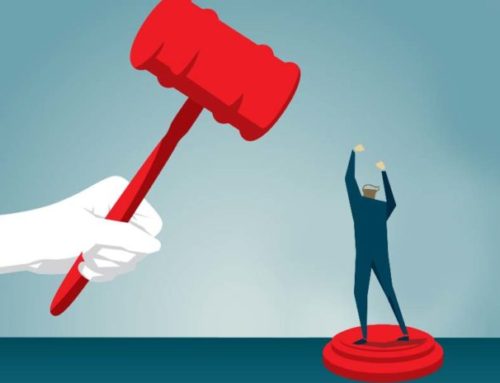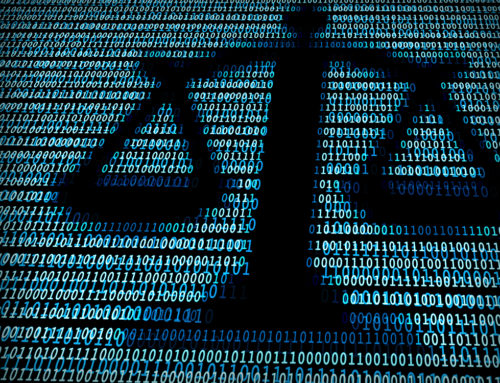Editor’s Note: The following is Part I of a two-part post on the judiciary and inclusion of differently-abled persons as judges. In this part, authors Eeshan Sonak and Yash Dodani point out the problems with Supreme Court’s judgment in V. Surendra Mohan v. State of Tamil Nadu, which held that a visual impairment or hearing disability above 50% rendered an otherwise competent candidate unworthy of being a judge. Part II covers how the recent overruling of the Surendra Mohan judgment is a welcome change.
In recent times, the legal profession in India is going through a progressive wave of increased sensitivity towards the needs of differently-abled persons. Several conferences and dialogues have been initiated in this direction (see here, here and here). Reforms are also underway given that the Chairperson of the Supreme Court eCommittee, Justice DY Chandrachud, has written to the Chief Justices of the High Courts across the country stressing the urgent need to create accessible infrastructure which enables physically challenged lawyers and litigants to participate in the legal profession at an equal footing with others.
In the recent judgment of Vikash Kumar v. Union Public Service Commission (‘Vikash Kumar’), a three-judge bench of the Supreme Court headed by Justice DY Chandrachud overruled its earlier decision of V. Surendra Mohan v. State of Tamil Nadu (‘Surendra Mohan’) passed in 2019, which had held that a visual impairment or hearing disability above 50% rendered an otherwise competent candidate unworthy of being a judge. Therefore, as of today, a candidate with more than 50% visual impairment or hearing disability who is otherwise competent can serve on the judiciary. In this two-part series, we shall deconstruct the ruling in Surendra Mohan, present our criticisms of it, and discuss how the Supreme Court seized the opportunity in Vikash Kumar to remedy this unjust rule.
Lady Justice is blind, but a Judge cannot be
In 2012, the Tamil Nadu Public Service Commission (‘TNPSC’) received a requisition from the State Government to fill up 162 posts of civil judge that were lying vacant. In doing so, the Commission was required to reserve at least one percent of the vacancies for persons suffering from “blindness or low vision” according to Section 33 of the Persons with Disabilities (Equal Opportunities, Protection of Rights and Full Participation) Act, 1995 (‘Disabilities Act, 1995’).
The TNPSC proposed to notify the percentage of disability as 40%-50%, and after approval by the Tamil Nadu High Court as well as the State Government, went ahead with the notification. In pursuance of this notification, V. Surendra Mohan, a visually impaired lawyer, applied for the role of civil judge. His application was rejected on the ground that he was 70% blind. Mohan filed a writ petition in the Madras High Court challenging this decision. In 2015, the High Court held that the TNPC’s decision was lawful as it was in line with the State’s policy.
In 2019, Mohan appealed to the Supreme Court, challenging the rejection of his application as well as the policy on the basis of which his application was rejected. He argued that the policy is arbitrary and unjustified. But the Supreme Court rejected his submission holding that “a judicial officer in a State has to possess reasonable limit of the faculties of hearing, sight and speech in order to hear cases and write judgments and, therefore, stipulating a limit of 50% disability in hearing impairment or visual impairment as a condition to be eligible for the post is a legitimate restriction i.e. fair, logical and reasonable.”
Contextualizing the decision and its criticism
In 2016, Arepalli Naga Babu, a former Increasing Diversity by Increasing Access (‘IDIA’) scholar and graduate of NLU Odisha, was denied the right to even sit for the Telangana judicial services exam on account of his disability. He filed a writ petition before the Hyderabad High Court and successfully persuaded the Division Bench to allow him to give the exam with compensatory time, a scribe, and a separate room. In its order, the Bench held that “he cannot be denied participation in the selection process under the open category merely on account of his handicap (blindness)”.
In 2017, the Supreme Court set deadlines to make public places accessible to visually impaired persons in accordance with the Right of Persons with Disabilities Act, 2016. It said: “This expansive understanding of right to life assumes greater proportions in respect of persons with visual impairments, who need a higher number of compensative skill enhancing facilities in order to go about their daily lives without suffering the indignity of being generally perceived as being dependent and helpless”. It also added: “It becomes imperative to provide such facilities so that these persons also are ensured level playing field and not only they are able to enjoy life meaningfully, they contribute to the progress of the nation as well”.
In 2018, the Madhya Pradesh High Court allowed a visually challenged petitioner to take the State judicial service examinations holding that “the problem is in the mind-set that a visually challenged candidate will not be able to read, write and thus, would not be able to discharge the duties as a Judicial Officer. Such visually challenged person may not be able to feel the things around him by his eyes but other senses make up for the deficiency. In fact, the disabled are not only victims of discrimination but also victims of apathy. The persons with disability do not require any sympathy but are required to be treated equal and are entitled to equal treatment warranted by Constitution”.
Despite these prior progressive advances, in the 2019 Surendra Mohan decision, the Supreme Court held that it is fair, logical and reasonable to have a stipulation that makes the blind ineligible for the post of a judge.
An article in the Wire criticized this decision as being “too ironical”. “How could they contribute to the progress of the nation if the doors of one of its important organ, is kept shut for them?” it asked. In an article for the Hindustan Times, Professor Shamnad Basheer criticized the decision by calling it a “regressive ruling” that breached the letter and spirit of the Constitution. Similarly, in an article for the Hindu, Rahul Bajaj criticized the line of thinking of the apex Court by saying that it is premised on the notion that the “existing ways of doing things will always remain the way they are, so tough luck to those whom they exclude”.
In fact, during a special session conducted by the Nyaya Forum in May 2020, Justice DY Chandrachud was asked a question on this judgment by one of us (Yash). Being a sitting judge of the Court, he refused to comment on the judgment, but on a side note, he said: “To my mind, modern technology has been so enabling, that I feel that the distinction between a person who does, and does not suffer from visual impairment, has no valid basis in law or Constitution. There are effective technological tools which would enable every aspect of legal process management to be available to the visually challenged.”He added,“Speaking for myself as a judge, as a human being, and as a student of the constitution, I believe that we must have in due course our first judge of the Supreme Court one day who would be visually impaired.”
Frustrating the purpose of the Disabilities Act
As per the Disabilities Act, 1995, Section 33 provides for reservation of posts in Government establishments for persons with disability, and Section 2(t) defines ‘person with disability’ as one suffering from not less than 40% of disability as certified by a medical authority. The Act recognizes the necessity of such reservation in ensuring equality of opportunity, and a level playing field for differently-abled persons.
However, the notification issued by the TNPSC severely limits the category of persons eligible to avail of the benefit of these provisions. Only a small fraction of the judicial service aspirants belong to the 40-50% bracket. Neither the TNPSC nor the Tamil Nadu Government has given any meaningful justification for keeping 50% as the upper limit. The Supreme Court in Surendra Mohan simply defers to Government wisdom on this, without questioning its scientific basis. It says, “impaired vision can only make it extremely difficult, even impossible, to perform any of these functions at all… Therefore, creating any reservation in appointment for those with disabilities beyond 50% level is far from advisable as it may create practical and seemingly other avoidable complications”. Through this ableist mindset, the Court overlooked the role of assistive technology in the performance of these duties by blind judges.
As explained by Justice Chandrachud in his interview, modern technology can easily make up for these gaps. In our opinion, imposing an upper limit of 50% is nothing but a mask to cover up the unwillingness (not inability) of the State to provide accommodations for the differently-abled. By upholding such a regressive rule, the Surendra Mohan decision was a black spot on an otherwise progressive profession that strives to achieve a level playing field for the differently-abled. It is a positive development that this black spot has been overruled.
Yash Dodani and Eeshan Sonak are second year students at NALSAR University of Law. Yash is himself a visually challenged student. Part II can be found here.







Leave A Comment